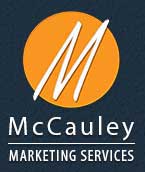4 Tips to Make Your Technical Writing Pop
At its essence, all marketing hinges on creating a relationship between a business and their customers, and the core of any strong relationship is effective communication. This usually means combining words and images to persuade or evoke specific emotions, but in highly specialized and technical fields like computer applications and health care, the job of the marketing copywriter may also involve explaining to the public exactly what it is that a company does or making intricate scientific information clear. This is where technical writing comes in. While many mistakenly believe technical writing is simple, it actually presents a number of unique challenges that require careful planning and diligence to overcome. Here are four key ideas to keep in mind while writing technical material to make sure that it does what it needs to do while still engaging the reader in a meaningful way.
 Do Your Research
Do Your Research
It almost goes without saying that, before writing any technical piece, you need to understand what you are talking about, so drawing your information from a variety of legitimate sources is a must. Truly good technical writing, however, requires going even further. It is not enough to simply parrot what the experts say; you also need to recognize which elements are essential and which can be glossed over so that your readers get your gist without being bogged down in minutiae. In health care marketing, for example, potential patients want to know what to expect, but could easily be made uncomfortable by overly specific details. When you have the opportunity to speak to experts in person, start with very simple questions, even if you are embarrassed you may sound dumb. This forces your subject to fill in basic details that they might otherwise not think to mention, and encourages them to use language that is easily understood.
Pick Your Words Carefully
Every specialized profession has its own jargon, which practitioners use both for convenience and clarity. However, the terminology that helps ensure their colleagues understand exactly what they mean generally has exactly the opposite effect on the average layperson. As a rule, avoid using jargon whenever possible. Instead, explain the specialized terminology using descriptive language, preferably something that the reader can visualize. Using analogies to explain a complicated process by comparing it to a process with which people are already familiar can be a particularly effective way to keep a technical piece accessible.
Keep Your Syntax Clear
How you arrange your sentences makes a difference, particularly in technical writing. While complex structures are useful for eliciting a particular emotional response from a reader, the demands of technical writing require more direct and predictable organization. When the subject matter is already difficult to understand, intricate sentence structure only gets in the way. Try to keep your sentences simple by avoiding excessive subordinate clauses or the passive voice. Most importantly, place your main idea in the main clause of each sentence so that your reader intuitively understands which ideas require their focused attention.
Let Your Formatting be a Guide
Most people tend to organize their thoughts visually, and so giving your readers graphic cues can go a long way towards helping them understand your material. Consistent fonts and type size for headings and subheadings make a document much easier to scan quickly, and bullet points allow you to present large chunks of information in an easily organized form. Finally, do not underestimate the power of graphic design. Infographics and diagrams that supplement and reinforce your text can get your readers to really “see” what you mean.
Technical writing may not seem glamorous, but when it is performed well it can bridge the gap between highly specialized professionals and consumers in a way that few other things can. If you would like to explore how the copywriters and graphic designers at McCauley Marketing services can make a difference for your business or health care practice, schedule a marketing meeting today. We’d love to hear your thoughts, so please connect with us on Facebook, Twitter, and Google+ to share your tips and recommendations.
